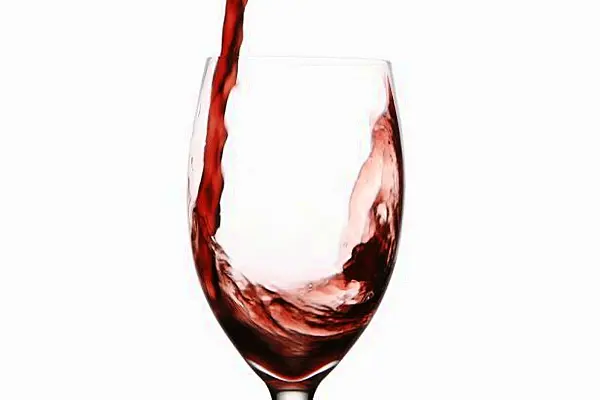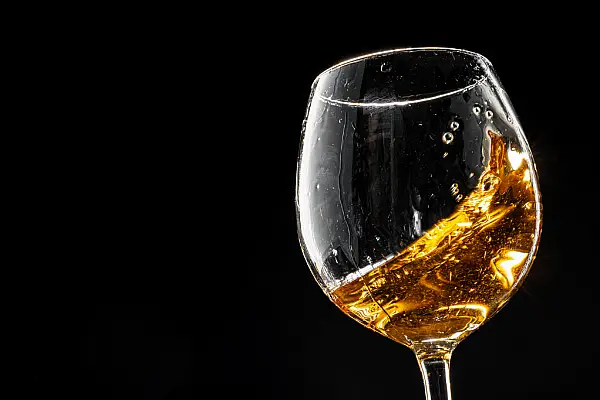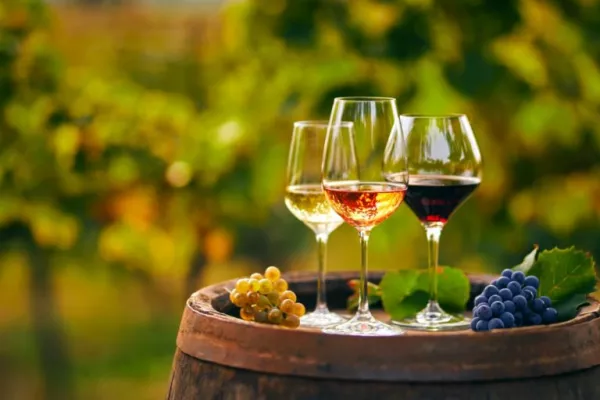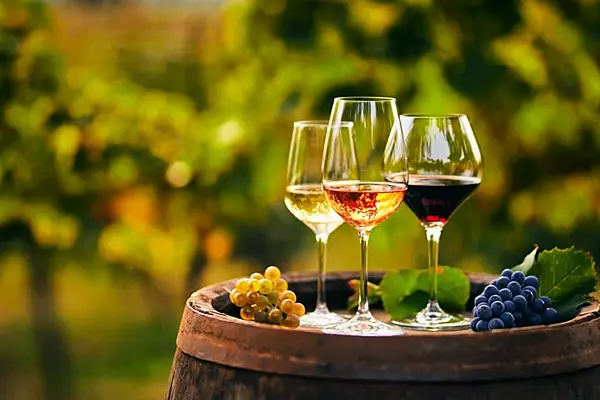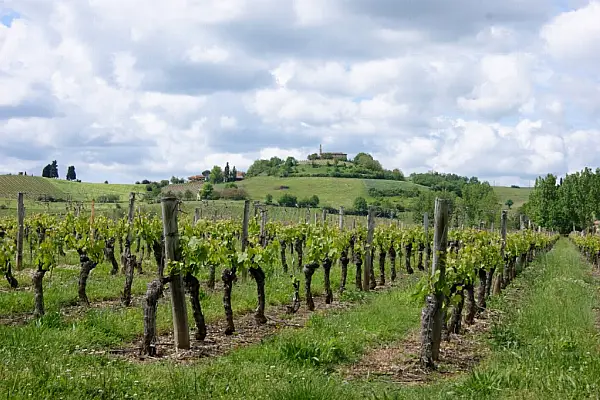The impact of climate change and new technologies (like the ability to check wine prices on smartphones) are on my vinous radar for 2016, writes Elin McCoy, the wine critic for Bloomberg Pursuits.
Sparkling wine, especially ubiquitous prosecco, is still going strong, but “premiumisation” is coming. Ditto for rosé.
The future for wine looks bright, though craft beerand craft cider are siphoning off plenty of attention. Still, more people than ever (in the US and UK especially) are drinking more expensive bottles - although you can get byquite splendidly under $50, too. The fact that “wine red” is the new fashion color for shoes can’t hurt either.
Here’s what else I see in my crystal (glass) for the coming year.
English Sparkling Wine Will Take Off
Global consciousness of the quality of English bubbly got a huge boost when French champagne house Taittinger announced in early December that they’d purchased vineyard land in Kent and plan to make top sparkling wines under the Domaine Evremondlabel. I predict other champagne houses will follow suit.
The famously cold Champagne region is now warmer than it was a generation ago while even chillier southern England, which has the same chalky soil, has been heating up in a beneficial way. Producers like Ridgeview, Nyetimber, andCoates & Seely make fine fizz, but little has been exported. With this French vote of confidence that’s sure to change.
“Natural” Wines Join the Mainstream
Once embraced solely by a tiny purist fringe, “natural” wine is poised to attract a much wider audience, especially in small, trendy (as well as high-end) restaurants with curious sommeliers. New York, for example, added three new natural wine bars in 2015, including industry-favorite Wildairand The Four Horsemen, the two-star-rated Brooklyn project of LCD Soundsystem’s James Murphy.
This is happening not just in the biggest metropolitan areas, but in places like Austin, Texas and Nashville, Tennesee, too.
Partly it's an inevitable consumer move toward artisanal products, coupled with the fact natural wine quality has improved. (Look at pétillant-naturel bubblies, a fun entry point with a half-dozen or so American winemakers experimenting today.) And partly it’s because many restaurateurs are taking a more inclusive view of wine, where hard-core no-sulfur examples, top organic and biodynamic bottles from Domaine Michel Lafarge, and Chateau Lafite can co-exist on the same list.
2016’s Hot Grape Will Be ... Cabernet Franc
While dozens of obscure, exotic varieties with unpronounceable names will attract buzz, cabernet franc is seriously ripe for its own moment. The most important red grape of France's Loire Valley (itself attracting buzz), cab franc is a rising star in Chile, California, Washington State, Argentina, the Finger Lakes, Virginia, and South Africa. Why? It’s highly versatile and makes fragrant, elegant wines with earthy, spicy, herbal notes with a food-friendly tingly acidity.
And as the climate heats up in Bordeaux, winemakers at prestigious Pomerol estates like Chateau Lafleur are adding more cab franc to their merlot/cab franc blends because the grapes contribute higher acidity and lower alcohol.
Italy is the Next Burgundy
Burgundy is still super hot, pulling in big bucks at auctions. But as trade in top Bordeaux drifts downward on international wine exchangeLiv-exand Burgundy seems priced for billionaires, Italian reds like Ornellaia and Sassicaia and 2010 Brunello di Montalcinos seem like bargains. But I’m looking to Piedmont as the next collectible territory for out-priced Burgundy lovers. Barolo and Barbaresco offer an awful lot of what makes Burgundy appealing - wonderfully scented, terroir- driven, food-friendly, complex reds from single vineyards. The Over-Kill Luxury Winery Tour Is Coming
When top wines go for ridiculous sums, who can be surprised if winery tours take the same path? The Napa Valley’s Castello di Amorosa, a 107-room recreation of a 13th-century Tuscan castle, with fermentation rooms and barrel cellar, has started the ball rolling for exclusive, expensive winery tours. Their VIP packages run from $1,000 to $20,000, which could include a barrel head branded with your name, a leather bound album of photos of you on the day-long tour taken by a professional photographer, 288 bottles of cabernet sauvignon from your own barrel of wine, with personalized labels, and even a box of 15 Montecristo Platinum collection cigars.
Champagne house Duval-Leroy has introduced the ultimate tour in which you can also create your own blend, which will be delivered in engraved bottles. Minimum order 1,000 at a cost of €40,000.
Wine-by-the-Glass Is Back to the Future
A cluster of converging trends will result in better - and many more - wines by-the-glass in restaurants everywhere. Curious consumers are looking to expand their palates; the rise of casual wine-focused bistros reflects the way we eat and drink; and innovative wine preservation technology is now available.
Les 110 de Taillevent, a relaxed, less-expensive version of the iconic Paris restaurant, opened a branch in London in October, with, yes, 110 wines by the glass. Meanwhile in San Francisco, Dirty Wateropened in the Twitter building in July with 114 options priced from $10 to $300.
The main technology game changer is the Coravin, a device that allows some wine to be removed from a bottle while keeping the remainder fresh. After initial glitches (broken bottles, etc.) a new, improved version launched globally this year. Expect many more restaurants to begin using it in 2016.
The Rise of the Wine Truck
Given the popularity of food trucks, the vintners of Saint-Emilion have decided to start their own wine truck - a shiny red vintage 1976 Citroen panel truck with the phrase “Saint- Emilion Wine Trip” inscribed on its side. This pop-up tasting room on wheels will make 15 to 20 stops at jazz festivals, wine fairs, and antique markets in four French regions: southwest France, Pas de Calais, Brittany, and Alsace starting in March 2016. A sommelier-driver will pour the rotating 16 wines, alongside winemakers, who will arrive at every stop.
Surely other wine regions will see the potential. Napa, start your engines.
“Celebrity Wine” Category Will Expand
Increasingly, wines carry labels with the names of TV series (Downton Abbey), baseball teams, NFL stars, actors like Diane Keaton, books and movies (Fifty Shades of Grey).
Now that public relations firms view reds and whites as a way to extend the brand of just about everything, including restaurants, I’m convinced there will be many, many more in 2016. (Though I’m not sure the odd match of a Finger Lakes riesling adds anything to the image of the New York Yankees.)
The latest to join the celeb wine club is Grammy-winning musician John Legend, who teamed up with Jean-Charles Boisset, owner of Napa’s Raymond winery, to create “a unique series of rich, soulful and complex notes inspired by true love.” Translation: an opulent cabernet ($85) and seductive chardonnay ($45) under the LVE Collection label.
No word on whether they’ll sing in the glass.
News by Bloomberg, edited by Hospitality Ireland
